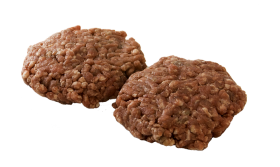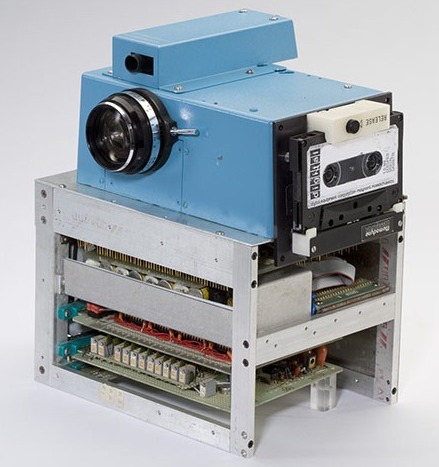
“RAW, RAW, RAW!…that’s the spirit!” I hear this all the time from a number of folks who shoot RAW with their cameras.
So let’s talk about image formats. And by “talk,” I really mean converse. I’d like to hear what you think. Note that I am at least vaguely aware I don’t know everything.
There are many, many digital image formats. The first was purely a bitmap. When Steve Sasson cobbled together the first digital camera, he wrote the digitized voltages collected by his Charge-Coupled Device to cassette tape in a serial fashion that saved 4 bit values that could be decoded as a monochrome X by Y bitmap. Perhaps better said, Steve captured a black and white grid that was a picture.

From that beginning, a number of formats have arisen to serve different needs. Many years later, we have numerous formats to contend with. I’ll mention three of them.
TIFF (Tagged Image File Format), circa 1986, was an attempt to provide a standardized image format across multiple scanner manufacturers.
JPEG (Joint Photographic Experts Group), circa 1992, was a standardized image format designed for practical image storage.
RAW (like hamburger), is not really an image file format, nor is it a standard. It is a name given to a group of data storage formats that may or may not conform to an ISO standard, and must be interpreted in the specific manner saved to become an image. Bottom line? RAW files are generally glorified TIFF files intended to provide a true representation of the sensor voltages that capture what becomes an image.
But wait, there’s more! In order to have an intelligent conversation about these formats, you need to consider at least two other things.
COMPRESSION – or how to squeeze 10 pounds of potatoes into a 3 pound bag; and
BIT-DEPTH – how many levels you have to get from black to white. The number of steps on the stairs to get from the dark basement to the sunlit first floor.
In a nutshell, for image quality, no-compression-at-all is ideal, and infinite bit-depth is what you’d have if you had a completely accurate reproduction of the captured scene. But these conditions are generally impractical, so compromises are made.
JPEG saves space by compressing the image. The compression used is “lossy”, meaning that the compressed saved image is not quite the same as the captured image. Additionally, the sensor sensor data, which generally does not have all the colors at every pixel, is expanded (interpolated, really) in a certain fashion prior to compressing and saving. Generally 8 bit depth for each of the three channels.
TIFF also saves space with compression, but the compression is not lossy. If you save an image as a TIFF file, you will not be degrading it by saving. Great, eh? Yes, but the price you pay is that the image file is much larger. The bit depth can be whatever specified up to 16 bits per channel. Also great, but uses more storage space. And the stored file is 3 channels of interpolated (no-pixels-missing) display-ready image data.
RAW files are not compressed. In addition to high bit depth (12 or 16 bits per channel) image data, RAW files provide all kinds of additional data that allow a skilled practitioner to modify the image data in the best possible way. Of course “best,” like the image data, is subject to interpretation. And the image data NEEDS interpretation, because none of the standard options for processing have been applied.
You know when the first RAW file was recorded? In 1975, when Steve built that first digital camera. No standard processing processing applied, his RAW images needed to be interpreted in a camera-specific way. Which Steve also did, so that those he showed didn’t need to trust him that there was an image captured in there somewhere on that audio cassette.
So let’s do the comparison:
Good – JPEG
Better – TIFF
Potentially Best – RAW
But before the Academy awards the golden statue to RAW, let me venture an opinion. You probably don’t need it!
Why not? More on that in the next post.
– Randy
PS – If you recognize the opening quote from recordings of the Firesign Theater, I suggest that you also ponder, “What is reality?”
